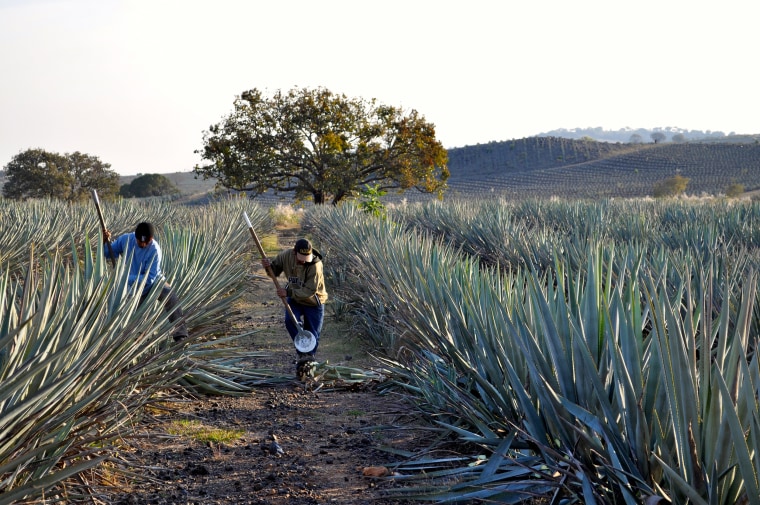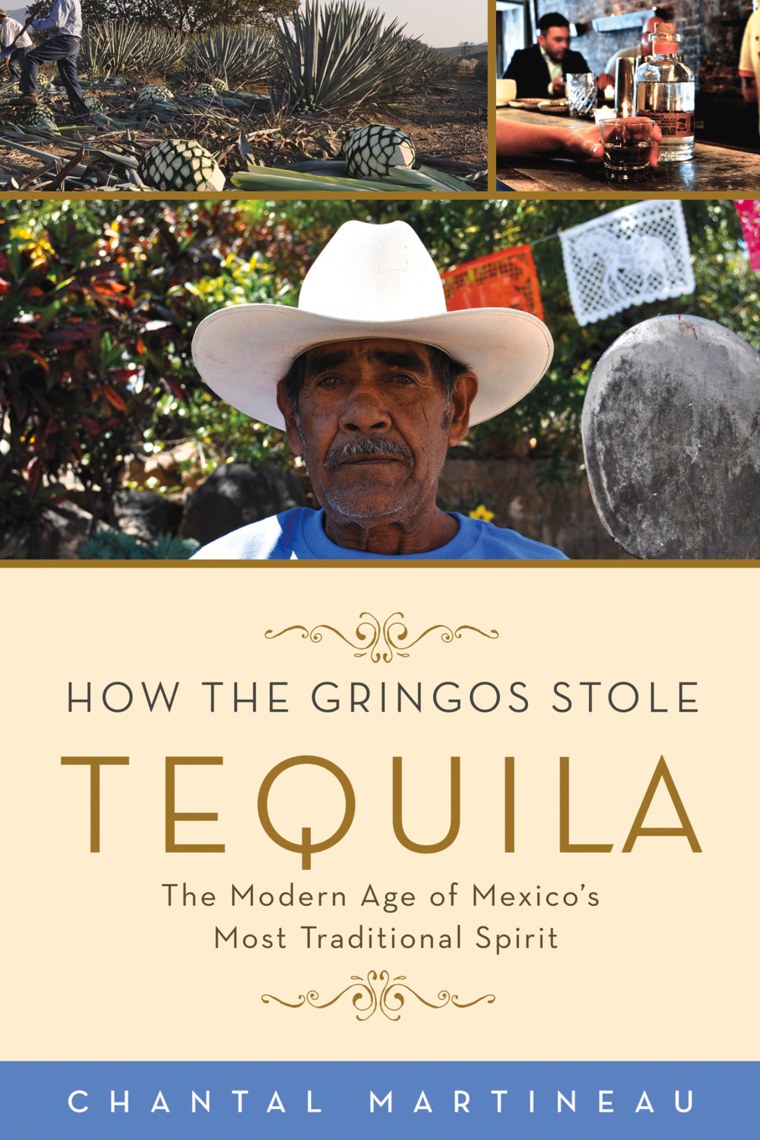Cinco de Mayo is not only about margaritas and Mexican food, but the truth is many of us will consume great quantities of both on that day. But before you drink from your salt-rimmed glass, author Chantal Martineau wants to change the way you think about tequila. In her new book, “How The Gringos Stole Tequila,” she traces the growth of the tequila industry in the U.S. and explores the range of repercussions that its popularity has had in Mexico.
Tequila is enjoying something of a renaissance lately. Although often associated with shots and wild college parties, it is one of America’s most popular spirits categories. Americans drink about 50 million liters of tequila annually, which is more tequila than is consumed in Mexico. The premium market for tequila has shown impressive growth, and there is even a National Tequila Day on July 24.
In “How The Gringos Stole Tequila,” Martineau explains the process by which tequila is created from the sap of the agave plant. She notes that the global demand for tequila has transformed what was once an ancient, labor-intensive process into an industrialized, multi-billion dollar business.

Originally from Montreal, Martineau spent five years immersing herself in the tequila world on both sides of the border. Martineau, who has also written for The Atlantic, the Washington Post, and Saveur magazine, visited Mexican distilleries, attended tastings and seminars and met with experts and academics who have studied tequila.
Martineau, 38, recently spoke with NBC News about her background, her new book, and why it might be better to hold that lime the next time you partake of Mexico’s most iconic drink.
NBC: You make the point in your book that what most Americans know as tequila is not really tequila.
CM: What a lot of Americans associate with tequila is actually mixto, a cheaper, less-refined hybrid of just 51 percent agave; the other 49 percent is usually stuff like corn or sugarcane. So what most people think of tequila is that strong, astringent stuff you have to take with a salt lick and then bite down on lime because it is so terrible. That kind of tequila is not about enjoying the drink that someone made from an ingredient that they had to wait seven years to harvest. Instead people think of tequila as party fuel, something to get you wasted, and it is a shame! That is not really what tequila is, or at least not good tequila.
NBC: What started you off on this exploration of tequila?
CM: Before becoming a “tequila-head,” I was a wine person. I still am; I am a wine lover. I guess it all started when I went to my first professional tequila tasting (like a wine tasting) and it piqued my interest. I learned how agave spirits can communicate like wine does, through terroir, or a sense of geographic place and tradition – and it just snowballed for me.

NBC: In your book, you call Patrón the “Starbucks of tequila.” Why is that?
CM: I don’t think that is a negative thing. I use the comparison as an example of how Starbucks taught everyone that there is more to coffee than bad $1 coffee. Similarly, Patrón taught us that $50 for tequila is not such a crazy idea. If you are paying for it, at least you do get a spirit that is 100 percent agave. So the two companies have had sort of a parallel arc, helping to change people’s perceptions of a drink that was previously taken for granted.
NBC: You discuss both tequila and mezcal in your book. Can you explain the difference?
CM: You might say that tequila is mezcal, although not all industry people would agree. Long ago, tequila was really one of many mezcals that were made all around Mexico. But today there are distinctions that have developed as the industry has grown. Tequila must be made from the blue Weber agave plant, while mezcal can be made from a variety of agaves. Tequila has evolved in terms of how it is produced; it is often made in factories. Mezcal remains rustic in terms of its production methods; it is often made in palenques (home-made distilleries) without electricity or walls. And tequila is usually made for the U.S. at 80 proof. Mezcal can be bottled at whatever degree of alcohol the maker feels tastes best.

NBC: Is it possible for a consumer to have an authentic tequila experience without spending a lot of money?
CM: Yes and no, because everyone’s definition of “high end” is subjective. Certainly, you don’t have to spend $200 for a good tequila; a lot of the super-premium brands are really expensive because you are paying for a really nice bottle. But you shouldn’t settle for something that is $10 a bottle because it is 49 percent sugar and other ingredients. I recommend not going for the high-end brands. It is better to look for a company that is still family-owned, rather than to just assume that a higher price means the tequila is better. You can spend $25 or $35 and still get a decent tequila. So I would say, don't spend $300 – but don’t spend $10!

